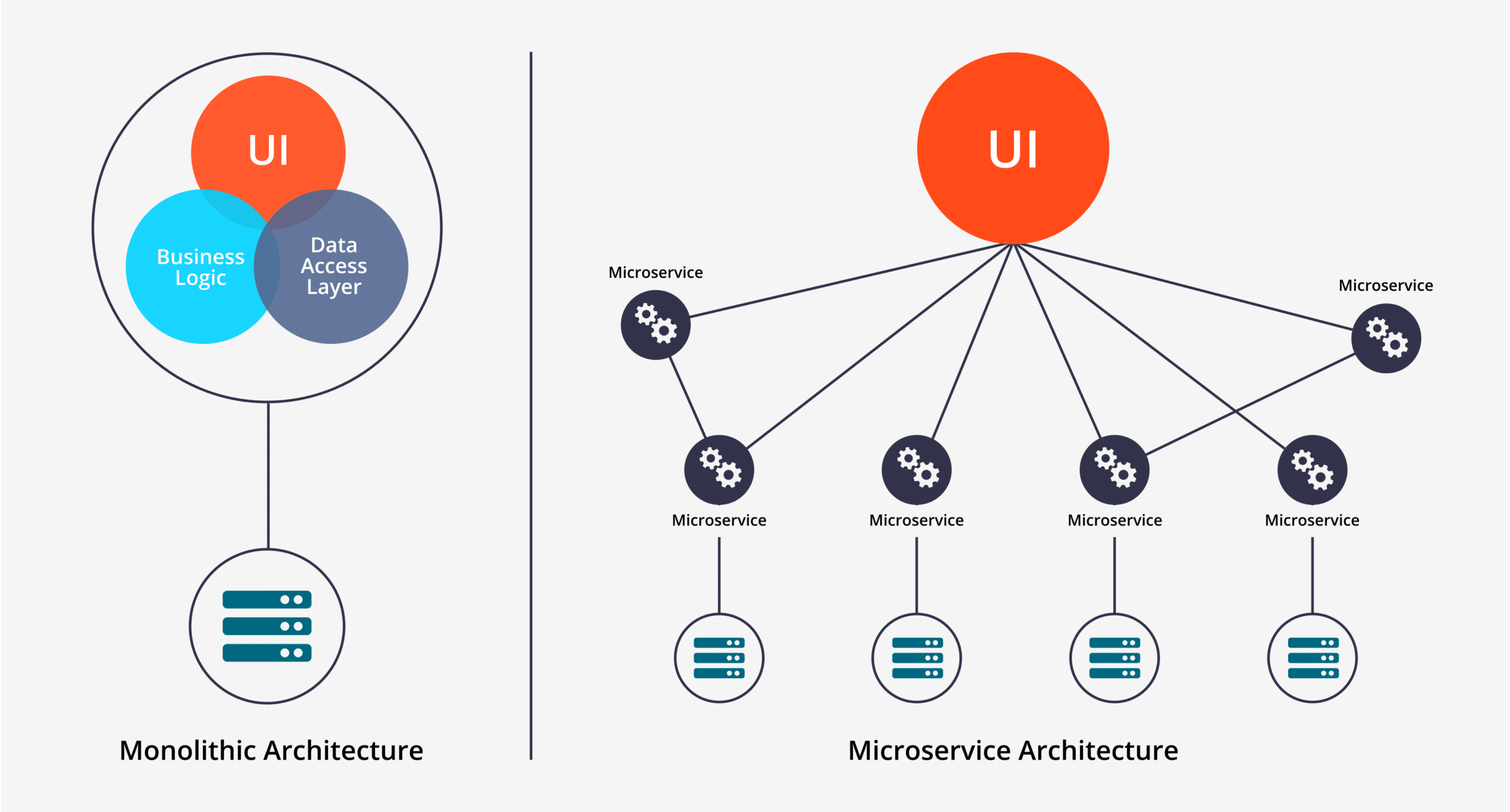You want to scale up your organization, deploy software quickly, and ensure speedy deliveries but aren’t sure what to do with microservices and containers. If you’re tired of writing code from scratch and want to break down custom software development into independent granular components that are scalable in nature, then microservices and containers are for you.
Let’s look at what microservices and containers offer and how they can help you and your enterprise for Cloud Migration and Computing

Succinctly speaking, Microservices and containers are the Peanut Butter and Jelly of modern day software development and deployment. Microservices and containers are not a “one-size-fits-all” approach but are made for different use-case scenarios.
Let’s look at what microservices and containers offer and how they can help you and your enterprise for Cloud Migration and Computing.
Faster Deployment
Microservices quench the need for speed and ensure rapid deployment of software solutions. In short, every software is divided into different components or modules. These modules are written in different languages and technology stacks/tools, thus becoming scalable. When all these modules come together, they form the complete software package like Devops Solutions & Services.
In summary, a microservice is basically an individual component of a software or enterprise product that performs a singular task or function.
Containers basically ship microservices and let them run in isolated runtime environments. Netflix and Amazon are two major players who have migrated from monolithic to microservice architectures due to their scalability and flexibility.
Scalability And Agility
Microservices along with containers make products agile through scalability as every component is built independently and irrespective of the others. Production-grade container-orchestration tools like Kubernetes, Docker Swarm, and Nomad, and cloud environments like Amazon ECS, Google Container Engine, and similar alternatives enable mechanisms that scale containers based on business and enterprise loads and requirements.
By adapting microservices and containers into your deployment pipeline, you undergo a thorough understanding of system architectures, topology, and functionalities from an operational and performance-contextual perspective, thus enabling in-depth system comprehension.
Divide And Conquer
In the end, microservices let you divide and conquer different aspects of software development by separating functioning components into different modules. By breaking down the system into different parts that function independently from one another and integrating them together into one functioning as a whole, your organization can proceed to test and deploy new variations of services rapidly without compromising on the functioning of the whole software, unlike monolithic architectures whose modules are dependent on each other. Your foundations are strong and microservices and containers, when combined, let you iterate and try out different variations of design and delivery.
Conclusion
Suffice to say, microservices and containers have so much overlap in organizations that they pose certain challenges from an IT viewpoint. Besides facing deployment complexity increases with testing and pipeline variation challenges due to moving system modules, you need to have enough developers in teams to be able to manage and mitigate every aspect of the microservices pipeline. Or another way could to be to outsource software development and let developers who have sufficient experience handle it for you.
Consider event-based mechanisms and be sure to run validation tasks for libraries and images in containers since there is a vulnerability in the security and monitoring aspect of pipelines due to increased transparency.
